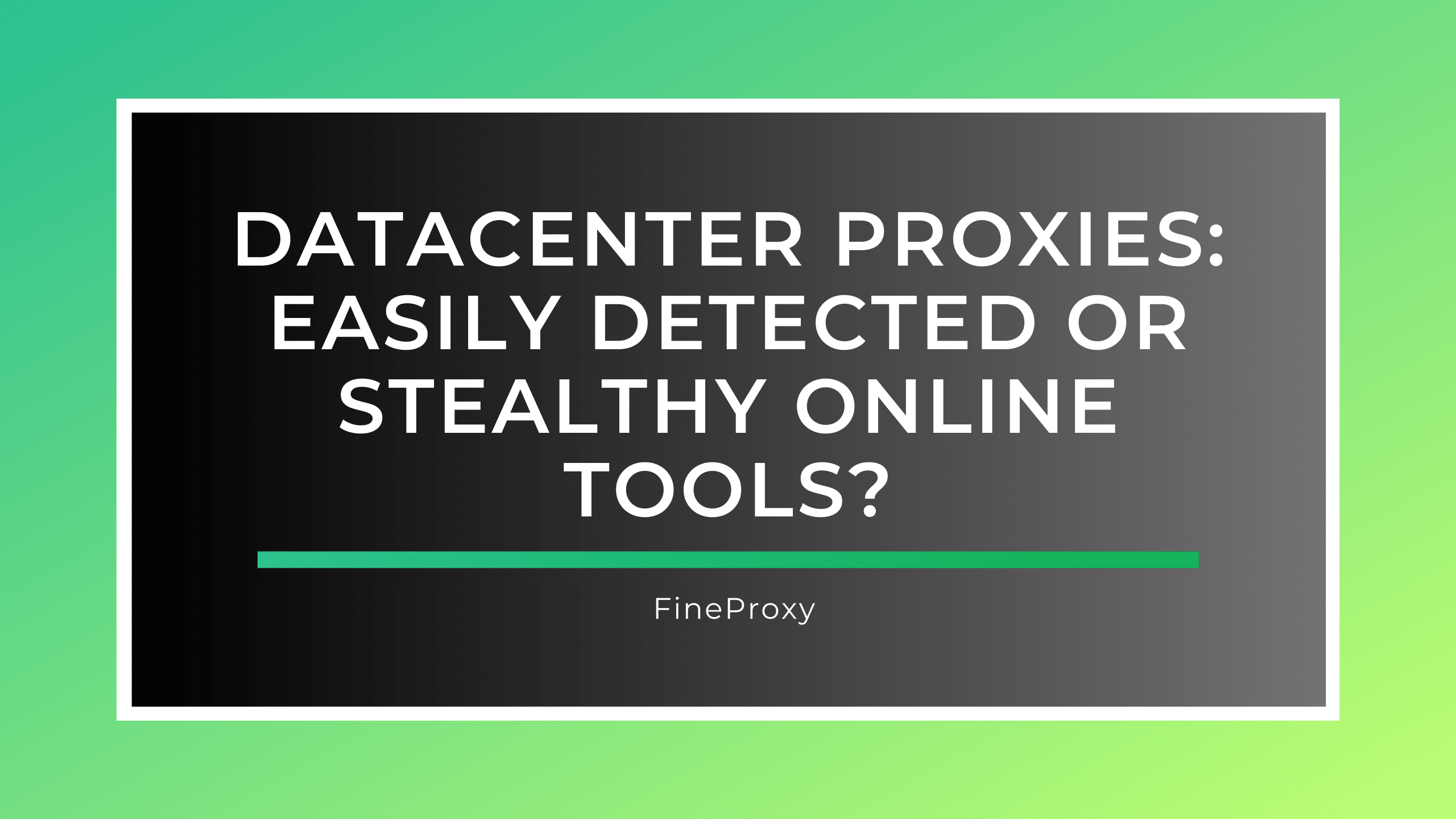
In the vast and continuously evolving digital landscape, the use of datacenter proxies has become a common strategy for individuals and organizations looking to mask their online presence. These proxies serve as intermediaries, routing users’ internet requests through different servers to obscure their real IP addresses. However, the detectability of datacenter proxies raises questions about their effectiveness in maintaining anonymity online. This article delves into the core aspects that influence the detectability of datacenter proxies, supported by facts, tools, and an illustrative table to offer a comprehensive understanding.

IP Address Range: A Double-Edged Sword
One of the most significant factors in the detectability of datacenter proxies is their originating IP address ranges. Unlike residential proxies that come from internet service providers, datacenter proxies are hosted in data centers. These IP ranges are publicly known and can easily be flagged by websites actively monitoring for proxy usage. The table below illustrates a simplified comparison between datacenter and residential IP addresses:
| Feature | Datacenter IP | Residential IP |
|---|---|---|
| Source | Hosting providers | ISPs |
| Detection Ease | High | Low |
| Common Usage | Web scraping, anonymity | Genuine user traffic |
Traffic Patterns and Behavioral Footprints
Datacenter proxies can exhibit unnatural traffic patterns that deviate from typical human behavior. High-speed data retrieval or an unusually high volume of requests from a single IP can signal automated tools rather than a human user. Such anomalies make datacenter proxies susceptible to detection and potential blocking.
Headers and Metadata: The Telltale Signs
The way datacenter proxies handle HTTP headers can also betray their presence. Incorrectly configured proxies might pass on headers that reveal their use, such as Via or X-Forwarded-For. These digital fingerprints allow websites to identify traffic that does not originate directly from a genuine user, increasing the likelihood of detection.
Datacenter proxies often suffer from poor IP reputation due to shared use. If an IP address gets blacklisted due to malicious activities by one user, it impacts all users sharing that proxy. This collective risk factor significantly contributes to the detectability of datacenter proxies, as outlined in the following table:
| Factor | Impact on Detectability |
|---|---|
| Shared Use | Increases |
| Poor IP Reputation | Increases |
Advanced Detection Techniques: Browser Fingerprinting and Behavioral Analysis

Websites employing advanced detection techniques such as browser fingerprinting and behavioral analysis can differentiate between traffic from datacenter proxies and genuine users. These methods analyze intricate details such as typing speed, mouse movements, and inconsistencies in the JavaScript environment, further exposing the use of proxies.
Concluding Thoughts: Balancing Anonymity and Detectability
While datacenter proxies offer a degree of anonymity, their detectability hinges on various factors from IP address ranges to advanced detection mechanisms. The effectiveness of these proxies in maintaining online privacy is a nuanced topic, requiring users to weigh their benefits against the potential for detection. Understanding the intricacies that contribute to the detectability of datacenter proxies is essential for anyone looking to navigate the online world anonymously. Whether these proxies remain a stealthy tool or an easily identifiable intermediary depends largely on the evolving landscape of online security and detection technologies.






Comments (0)
There are no comments here yet, you can be the first!